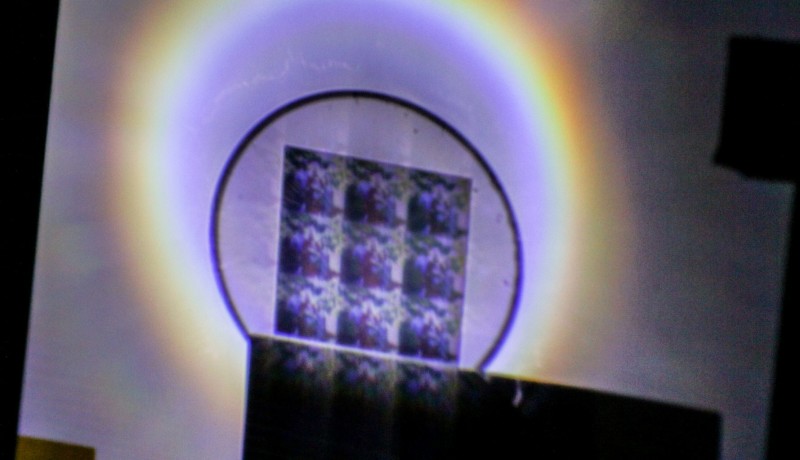Color holograms using ordinary light
on

A research team from the University of Utah (United States) under the leadership of professor Rajesh Menon has found a way to make cheap, full-color, 2D and 3D holograms that are more realistic and brighter than existing holograms, and also have a much greater viewing angle.
Normally the projection of an image (in two or three dimensions) is an inefficient process because we, when an object is illuminated with white light, see only the reflected colors, while the remainder of the spectrum is absorbed. As a consequence a great deal of light is 'wasted'. With a typical LCD projector we see, for example, only about 5% of the total available light at any given moment.
Professor Menon's team has found a better way, which is based on the same principle as the bright colors of (some) butterfly wings: instead of only reflecting the visible colors and absorbing the remainder, all the white light is reflected in such a way that you will see the different wavelengths (which correspond to the various colors) in different places. No light is absorbed so that nothing is lost.
With the help of sophisticated algorithms and a new manufacturing method the researchers can produce holograms that behave the same way – they reflect the correct wavelengths in the correct directions instead of absorbing them – resulting in much brighter, photo-realistic, 2D and 3D images in natural colors.
Up to now, to make and display color holograms lasers were always required; however, the holograms from Menon's team can be viewed in 'ordinary' white light. Additionally, these holograms can be viewed from any angle without losing any of the detail – perhaps the 3D chess pieces that R2D2 and Chewbacca are using in Star Wars, will be a reality before long...


Discussion (3 comments)